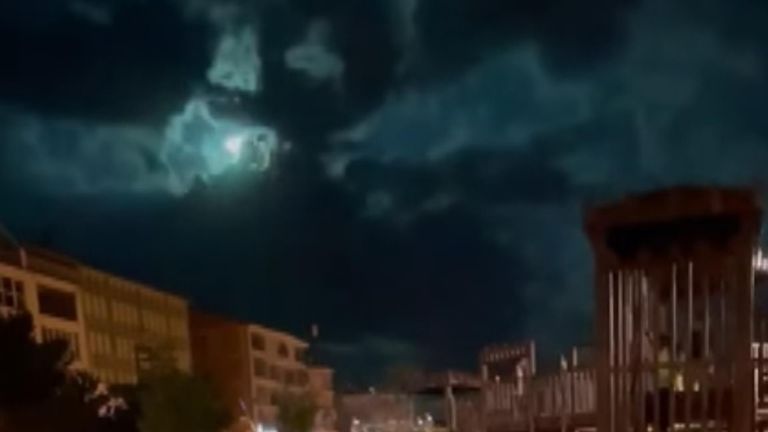Stargazers have a “rare and exciting” opportunity to see a comet shooting through space at 240,000 miles per hour.
Nishimura was only discovered last month but is already proving to be quite the spectacle, with astronomers encouraging people not to waste the chance to see it with the naked eye before it burns up.
It can already be seen in the hour after sunset and hour before dawn by looking east-north-east, experts have said, while peak visibility is expected next week.
Just before dawn on Tuesday 12 September is when it will be closest to Earth, at 78 million miles away.
But don’t worry, astronomers have charted its orbit and speed and there’s no danger of it hitting us.
Professor Brad Gibson, an astrophysicist at the University of Hull, said comet sightings only come round once a decade on average and that Nishimura presented a “rare and exciting opportunity”.
Brightening comet becoming easier to spot…
The comet is named after Japanese astrophotographer Hideo Nishimura, who saw it while taking long-exposure pictures of the night sky with a digital camera on 11 August.
Ever since then, the comet – C/2023 P1 to give it its proper name – has increased in brightness, which has made it visible without any special equipment.
The picture at the top of this article, from NASA, shows it flying above June Lake in California in August.
Of course, binoculars or a telescope will make it even easier for you to spot.
Stargazing apps like Night Sky, SkyView and Sky Guide can be a great utility, as they can help you find the precise location of comets by helping you map constellations of stars.
By pointing your smartphone’s camera up at the night sky, such apps will use augmented reality to tell you which constellations you’re looking at and offer tips on how to spot comets.
Read more:
Summer meteor shower in pictures
Please use Chrome browser for a more accessible video player

0:21
‘Meteor’ lights up Turkey sky
…but it may only have weeks left
While not yet confirmed, Nishimura is thought to be up to a mile or two in diameter.
Prof Gibson said the comet, which takes 500 years to orbit the solar system, could be responsible for the annual December meteor shower called the Sigma-Hyrdrids.
But it may not have long left on its travels, as a close fly-by with the sun could spell its doom.
It will get within 27 million miles of the hot ball of plasma on 17 September, potentially close enough to burn up.
Whizzing closer to the sun is what gives a comet its distinctive tail, as the heat liberates gas from its icy body.
Particles of dust and rock are also freed when this happens, which is what leads to meteor showers.
Like all its icy, rocky comrades, the comet Nishimura is part of the leftovers from the formation of the solar system nearly five billion years ago.







